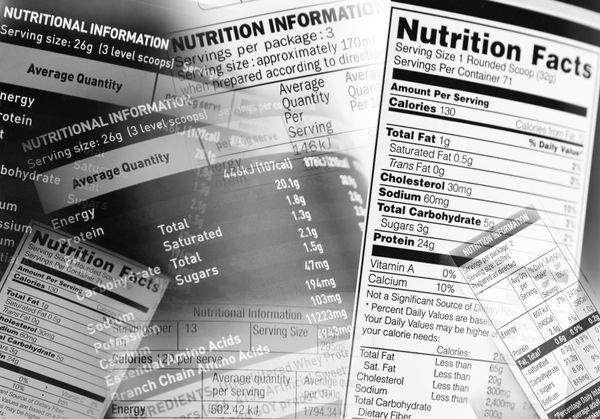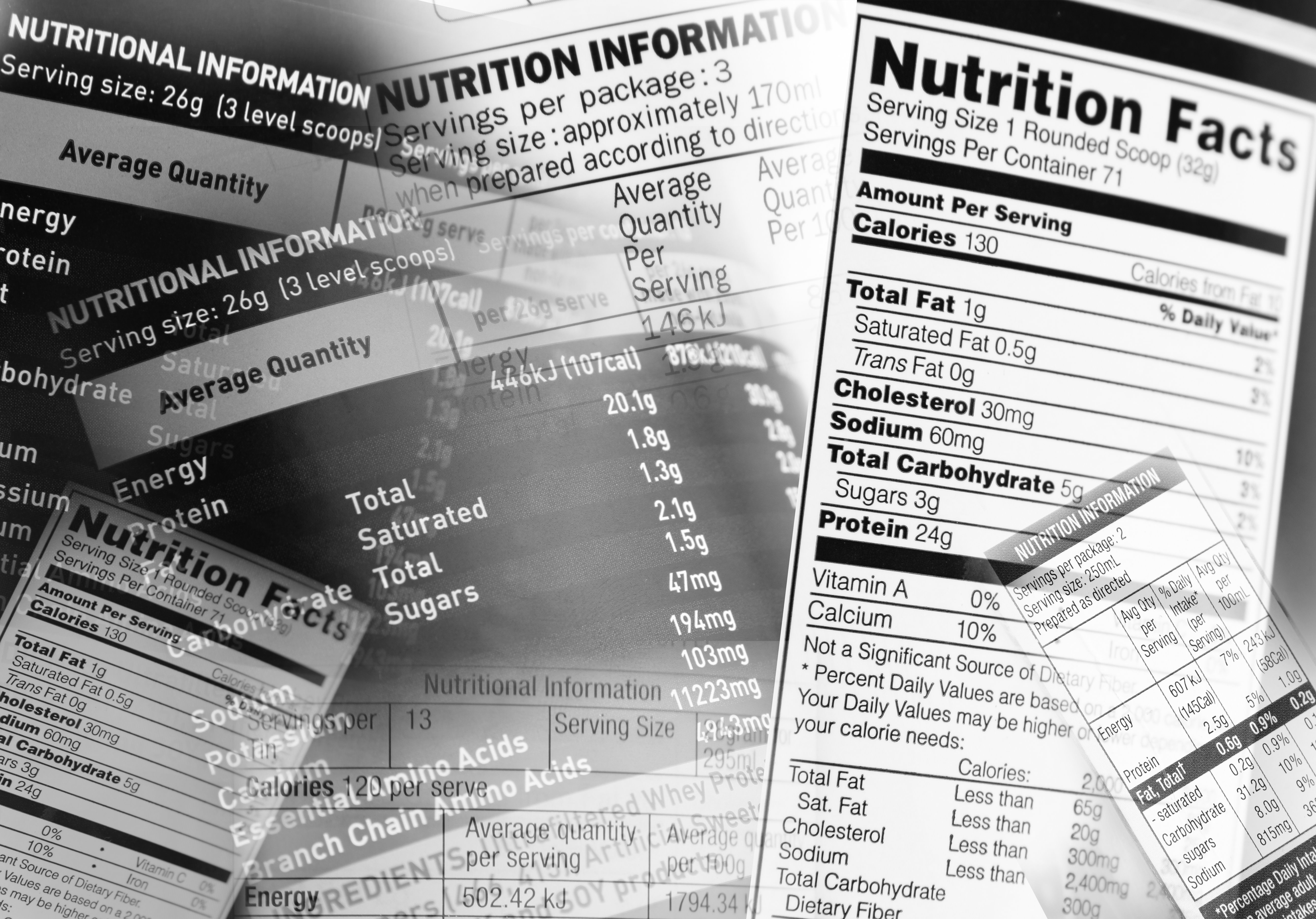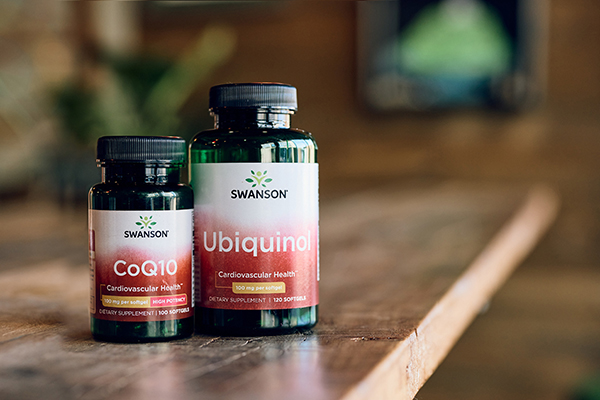Nutrition labels or food labels can seem downright intimidating if you’re unsure about what to look for or how to read them. Here are some tips on how to read a food label and understanding nutrition labels.
Why Do Foods Have Nutrition Labels?
Nutritional labels weren’t intended to be hard to understand. They were created by the U.S. Food & Drug Administration (FDA) to help consumers shop for healthier foods. Referencing studies and reports from both the Surgeon General and Nuclear Regulatory Commission (NRC), the FDA proposed mandatory food labels listing the calories and nutrients that have a significant impact on public health, plus including the recommended daily amounts for those nutrients, to make it easier for consumers to make informed choices about what they eat.1
All that helpful information isn’t useful unless you know what to look for and how to read nutrition labels, so let’s take a closer look at each section of a nutrition label.2

Understanding Serving Sizes (1)
The first section you’ll see on a food label lists the serving size and the number of servings in the package. That might seem straightforward, but pay close attention to this section because the rest of the information on the nutrition label is based on the specific serving size listed.
Serving sizes on nutrition labels are listed as standard measurements followed by the metric equivalent, so they should be easy to understand. However, what you may consider a reasonable serving might not be what the manufacturer had in mind when creating the label. If the serving size listed is one cup and you consumed two cups, you’ll need to do a little math and double the rest of the information listed on the label.
How to Check the Calories (2)
Below the serving size information, you’ll find a section listing the number of calories per serving and how many of those calories come from fat. Ultimately, calories equal energy. As you probably already know, it isn’t a good idea to consume more energy in a day than you’ll use. The FDA’s General Guide to Calories is based on a 2,000-calorie diet, but not everyone needs 2,000 calories a day and some people need more, so be sure to check in with your physician or a nutritionist if you're not sure how many calories you should consume each day.
Understanding Nutrients and Daily Values (3, 4, 5, 6)
The nutrients portion of a label is divided into two sections, usually separated by a thick, black line. Nutrients that should be limited are listed first like fat, cholesterol and sodium. Below those you’ll find a list of key nutrients like vitamins, calcium and iron that you should try and get enough of in your diet, according to the FDA.
When you look at this section of a nutritional label you’ll also see two columns of information. The left side lists the name of the nutrient and how much of that nutrient is in a serving of the food. On the right side is the percentage of the Recommended Daily Value (RDV). The RDV percentage represents how much of your daily quota a serving of that food will fulfill.
For example, if one serving contains 25 percent of the sodium you should consume in a day, and you had two servings, you consumed 50 percent of the FDA’s maximum recommended daily sodium intake. So, you’ll want to pay attention to how much sodium you consume for the rest of the day to avoid having more than what’s recommended by the FDA.
On the other hand, if a serving contains only 15 percent of the recommended daily value of calcium, you might want to make sure to get the remaining 85 percent from the foods you eat the rest of the day or meet this recommendation through calcium supplements.
Nutrients Without a Recommended Daily Value (3)
You might notice a few nutrients on food labels that don’t include a recommended daily value percentage: trans fat and sugars, and sometimes protein. That’s because the FDA has not established daily reference values for trans fat. Not all fats are created equal, but generally nutritionists recommend keeping your daily consumption of both trans fat and saturated fat to a minimum, plus minimizing sugar intake.
For sugar, the FDA did propose and accept a label change from “Sugars” to “Total Sugars” and the addition of a line for “Added Sugars.” The FDA did set a recommended daily value for added sugars at “less than 10 percent of total daily calories,” noting that “meeting nutrient needs while staying within calorie limits is difficult with more than 10 percent of total daily calories from added sugar.”3 Yet, manufacturers have until January 1, 2020 to update their product labels to include the new labeling rules for sugar, added sugar and added sugar daily value percentages (see more below in New Nutrition Labels). A recommended daily value for protein is only required on labels if the manufacturer claims the food is a good source of protein or if the product is intended for infants or children under four years old.4
Are You Getting Enough Vitamins and Nutrients? (4, 5, 6)
If you're not getting enough of the vitamins and nutrients your body needs from your food choices, you can help cover your nutritional bases with a complete multivitamin like Swanson’s High Potency Softgel Multivitamin.
In addition to their ingredients, supplements have a Supplements Facts label, which includes the amount per serving and the daily value percentage to help you achieve your recommended daily value.
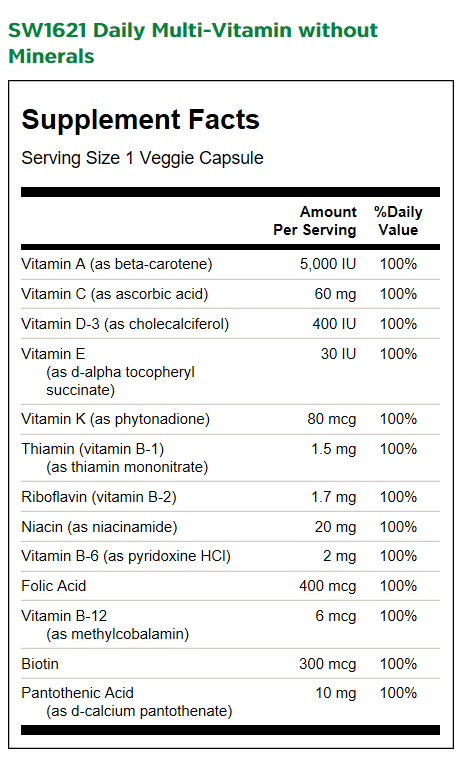
Keeping an eye on nutritional labels will help you know when you’re getting the right balance of nutrients recommended for you by a physician or a nutritionist for optimal health, but modern diets don’t always fill the quota.
Take the guesswork out of your vitamin regimen with Swanson’s Daily Essentials Kit — a vitamin supplement pack with a multivitamin, probiotic, vitamin D, and cod liver oil.
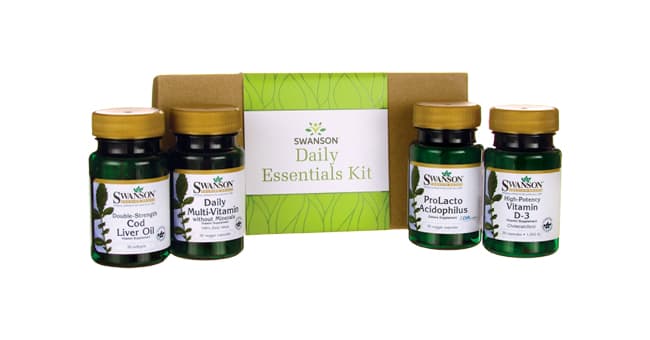
Sign up for Swanson Health emails to get 10 percent off and free shipping on orders of $50 or more, plus more insider tips for healthy living delivered straight to your inbox.
New Nutrition Labels — The FDA has issued updates and changes to the Nutrition Facts label, but manufacturers have until January 1, 2020 to update their packaging. Some manufacturers, such as Swanson Health Products, have begun the process of updating their nutrition labels. To read more about the coming changes, which include larger, bolder type, updated serving sizes, new Added Sugars line, updated daily values, and changes to nutrients required, visit the FDA’s Changes to the Nutrition Facts Label page.
Looking for more information about the ingredients listed in your food label?
Read Food Labels: Taking the Fright Out of Scary-Sounding Ingredients and Food Label or Warning Label: Top 10 Worst Processed Foods.

About Lindsey Toth, MS, RD
Registered Dietitian, Swanson Health Products
Lindsey is a nationally recognized registered dietitian and nutritionist with a soft spot for ice cream. She empowers people to take charge of their health by finding the balance between the pleasure and nourishment in food.
Her philosophy is that you should take care of your body because it’s the only permanent home you have. It’s what inspired her to pursue a career in nutrition and, ultimately, led her to Swanson Health Products.
Sources
1 Front-of-Package Nutrition Rating Systems and Symbols: Phase I Report: National Center for Biotechnology Information. https://www.ncbi.nlm.nih.gov/books/NBK209859/ (Accessed 10/24/2017)
2 Nutrition Facts Label: U.S. Food & Drug Administration. https://www.fda.gov/Food/IngredientsPackagingLabeling/LabelingNutrition/ucm114155.htm (Accessed 10/25/2017)
3 Changes to the Nutrition Facts Label: U.S. Food & Drug Administration. https://www.fda.gov/Food/GuidanceRegulation/GuidanceDocument
sRegulatoryInformation/LabelingNutrition/ucm385663.htm#dates (Accessed 10/25/2017)
4 How to Understand and Use the Nutrition Facts Label: U.S. Food & Drug Administration. https://www.fda.gov/Food/IngredientsPackagingLabeling/LabelingNutrition/ucm274593.htm (Accessed 10/24/2017)
*These statements have not been evaluated by the Food and Drug Administration. These products are not intended to diagnose, treat, cure or prevent any disease.
